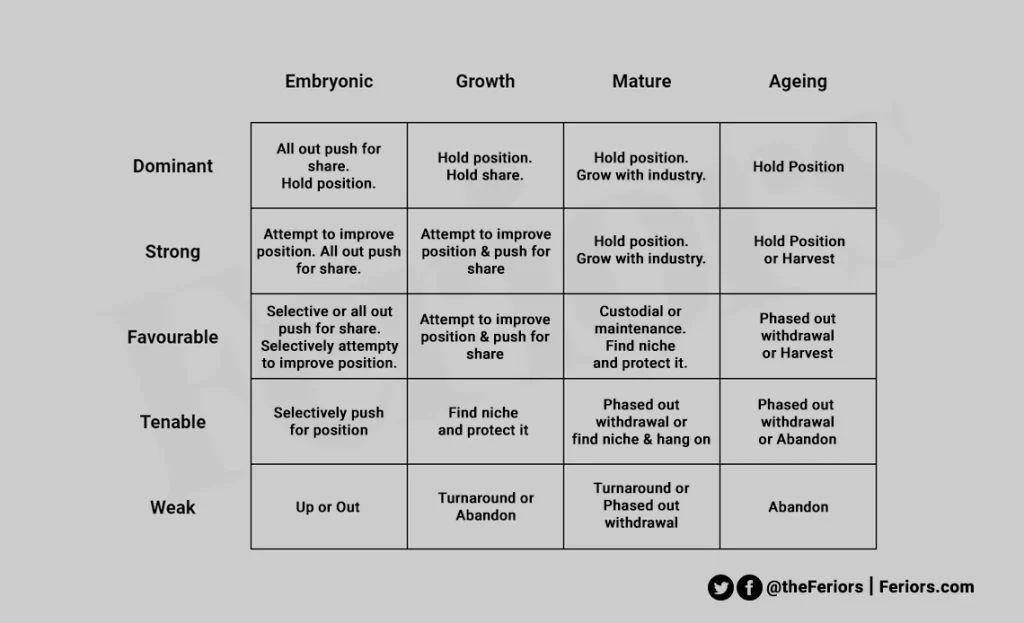What is ADL Matrix
ADL matrix is a portfolio management tool to help the organization determine the right strategy for a business unit through the current market life cycle of the business unit and the strength of the business unit within the market.
Each dimension of the ADL matrix (business life cycle and competitive position) can be split up into the following categories:
The business life cycle stages can be either of the following:
- Embryonic
- Growth
- Maturity
- Ageing
The competitive position represents the strength of the business unit within the market can be either of the following:
- Dominant
- Strong
- Favorable
- Tenable
- Weak
The combination of the competitive position and market life cycle result in 20 possible positions for the business unit, the manager need to define where their business unit takes place.

Industry Life Cycle Stage
The ADL matrix recognizes four stages of the industry life cycle. The business unit in the embryonic stage of the life cycle is likely to be less profitable than the maturity. Business unit in the embryonic stage requires heavy investment to grow up, whereas the later stages will be a cash generator.
- Embryonic – The business unit is new and in its youthful stage. This is a period when a business needs strong financial support because profits are not yet being realized.
- Growth – The business unit in the rapid growth stage. The company needs to make sure that there is sufficient production to meet the needs of customers.
- Maturity – The market is stable, growth is slowing. The business needs to focus on brand positioning and segmentation to maximize profits.
- Ageing – Sales fall away. Some competitors may exit the market during the ageing stage. The company can be harvested during this stage if the business is had strong competitive position.
The Competitive Position
The competitive position represents the strength of the business unit within the industry. The competitive position of a business unit depends on its market share, financial performance relative to the competitors, and strength of the branding.
- Dominant – The business unit in this category is a market leader or a monopolist.
- Strong – The business unit in this category is an oligopoly, the business is sharing a strong competitive position with a small number of competitors.
- Favourable – Represent a business unit that operates in a fragmented market where no dominant player.
- Tenable – The business in this category focused on a niche market segment.
- Weak – The business unit in this category has a small market share and weak financial performance within an aggressive market



